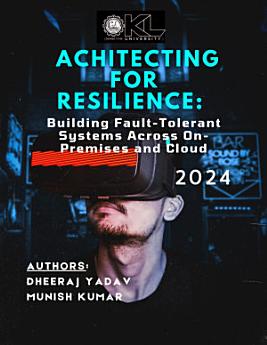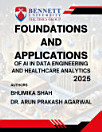Architecting for Resilience: Building Fault-Tolerant Systems Across On- Premises and Cloud
About this ebook
Businesses and users demand seamless experiences, even in the face of unexpected disruptions,
making resilience a critical attribute of any system architecture. As enterprises increasingly operate
across hybrid environments—combining on-premises infrastructure with cloud solutions—
architecting for resilience has become more complex, yet more essential than ever.
Architecting for Resilience: Building Fault-Tolerant Systems Across On-Premises and Cloud is a
comprehensive guide for designing systems that thrive in the face of uncertainty. It equips
architects, engineers, and decision-makers with the principles, strategies, and tools needed to build
fault-tolerant systems that ensure business continuity and user satisfaction.
This book explores:
• The core principles of resilience and fault tolerance in system design.
• Best practices for building distributed systems that recover gracefully from failures.
• Techniques for leveraging cloud-native features, such as auto-scaling, load balancing, and
multi-region deployment.
• Strategies for integrating on-premises systems with cloud platforms to achieve hybrid
resilience.
• Real-world case studies of resilient architectures from industries like finance, healthcare,
and e-commerce.
Whether you’re modernizing legacy systems, designing for disaster recovery, or aiming to achieve
high availability in mission-critical environments, this book provides actionable insights and
proven methods to ensure your systems remain robust under pressure.
The journey to resilience is a continuous one, requiring thoughtful design, proactive planning, and
a deep understanding of both on-premises and cloud technologies. As you explore this book, you’ll
gain the knowledge and confidence to architect systems that not only withstand failures but also
adapt to an ever-changing technological landscape.
Let this book be your guide to building systems that deliver reliability, stability, and trust—no
matter what challenges arise.
Authors




